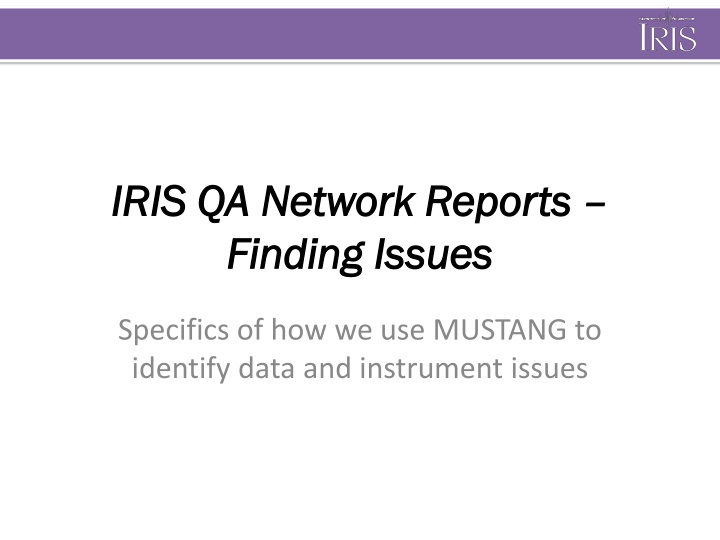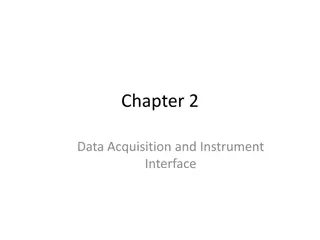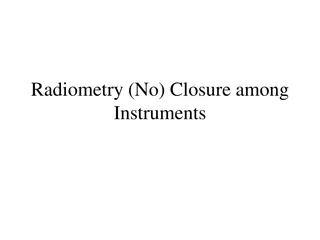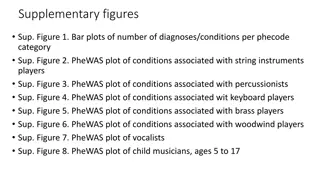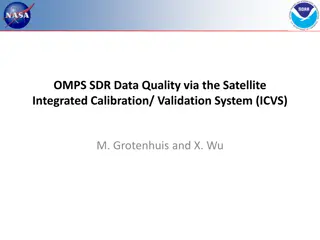Using MUSTANG to Identify Data and Instrument Issues
In the process of QA network reports, issues are identified using various metrics combined in scripts to automate issue finding. By utilizing MUSTANG metrics and generating HTML reports, different issues are evaluated, and a manual review process is performed on the findings. The available Python scripts streamline the start-to-finish reporting process, making it efficient and convenient.
Uploaded on Feb 17, 2025 | 0 Views
Download Presentation

Please find below an Image/Link to download the presentation.
The content on the website is provided AS IS for your information and personal use only. It may not be sold, licensed, or shared on other websites without obtaining consent from the author.If you encounter any issues during the download, it is possible that the publisher has removed the file from their server.
You are allowed to download the files provided on this website for personal or commercial use, subject to the condition that they are used lawfully. All files are the property of their respective owners.
The content on the website is provided AS IS for your information and personal use only. It may not be sold, licensed, or shared on other websites without obtaining consent from the author.
E N D
Presentation Transcript
IRIS QA Network Reports IRIS QA Network Reports Finding Issues Finding Issues Specifics of how we use MUSTANG to identify data and instrument issues
QA Reports review Concept: different issues can be identified by using different metrics in combination IU.QSPA.60.BH2 IU.FURI.00.BH1 dead_channel_lin pct_below_nlnm num_gaps num_spikes sample_rms pct_above_nhnm sample_rms
QA Reports review Concept: scripts can call the web services and combine values based on defined criteria By setting up scripts to combine the metrics for us, we can automate the process of issue finding There are likely to be false positives, so the issues should be reviewed This can only pick up issues that are catchable by MUSTANG metrics we have a decent list at this point, but are always happy to hear about new metrics or thresholds that could be useful
QA Reports doQA The Scripts We Use There are a few scripts that we use that we are making available to you One is the work horse it grabs all of the metrics and combines them One generates the actual HTML report The rest are used to facilitate the process from start to finish I m going to go through these in some detail so that they can be used or adapted to your needs.
QA Reports doQA Overview GUI (doQA.py) Autofills based on date. Reporting period for last month Path to preference file Facilitates start- to-finish of reporting process Python Preference file or manual input Run the scripts If no preference file, then need to fill in these fields
QA Reports overview Process: Process: Use MUSTANG web services to retrieve measurements Find Issues Evaluate Issues Generate Report Generate Report Find Issues Evaluate Issues Combine different metrics to find different issues Manual review of PDFs
QA Reports Find Issues Finding Issues Work horse Python code Web services Preference file optional OR: python findIssues.py --start=2018-06-01 --end=2018-07-01 --preference_file=/path/to/preference.py --network=IU --stations=* --channels=BH?,HH? --locations=* --outfile=/path/to/report.orig Report Utilities Preference File Find Issues Thresholds Issue List
QA Reports Finding Issues Find Issues findIssues.py Report Utilities Preference File Find Issues Thresholds Goes through the list of threshold Groups Grabs metrics required for all thresholds in that group Subsets based on listed thresholds Writes offenders to outfile Issue List
QA Reports Finding Issues Find Issues thresholds.py Report Utilities This is where you can change threshold definitions Preference File Find Issues Thresholds Requires: pandas, reportUtils.py Issue List Each threshold is its own defined function Ex: runGapsRatioGt12 Instrument types are defined by channel names channelDict = {"broadband" : ['BH?','HH*'], "short period" : ["EH*","SH*"]}
QA Reports Finding Issues Find Issues preference.py Report Utilities Preference File Find Issues Thresholds Preference file is used to define: SNCL information Threshold Groups Directory and name for outfile Issue List This is useful for when QA may be done separately on different channel groups or networks. Ex. Some stations may not have any timing information, while others do. To prevent cluttering the outfile, they can be divided into two separate preference files.
QA Reports Finding Issues Find Issues reportUtils.py Report Utilities This is where the utility work happens Parses input arguments Grabs metrics through web services Combines metrics as defined in thresholds.py Sorts and writes outfile Preference File Find Issues Thresholds Issue List Requires: pandas, numpy, datetime, argparse, sys
QA Reports Finding Issues Find Issues Report Utilities issueFile.orig Preference File Find Issues Thresholds Threshold|Target|Start|End|Ndays|Status|Notes List of issues sorted by threshold Pipe separated Issue List These fields different for some thresholds, which are averages over the reporting period. For example, avgGaps has no start or end associated, and reports the average value rather than the number of days. This file isn t very human readable, but is easily parsed by QuARG.py
QA Reports Finding Issues Find Issues findIssues.py Report Utilities Preference File Find Issues Thresholds When run, it will output progress to the console: Issue List
QA Reports Finding Issues Recap Use findIssues.py to highlight problem sncl-days using MUSTANG metrics The preference file can be used to more easily refine searches or switch between searches, reduces the number of inputs The threshold definitions can be viewed or changed in thresholds.py reportUtils.py has the functions that grab and combine metrics, amongst other things This produces a file (by default report.orig) that isn t easily human readable but is used in the next step to examine issues. You can use the GUI doQA.py to easily load in files and autofill from there OR You can run findIssues.py on the command line
